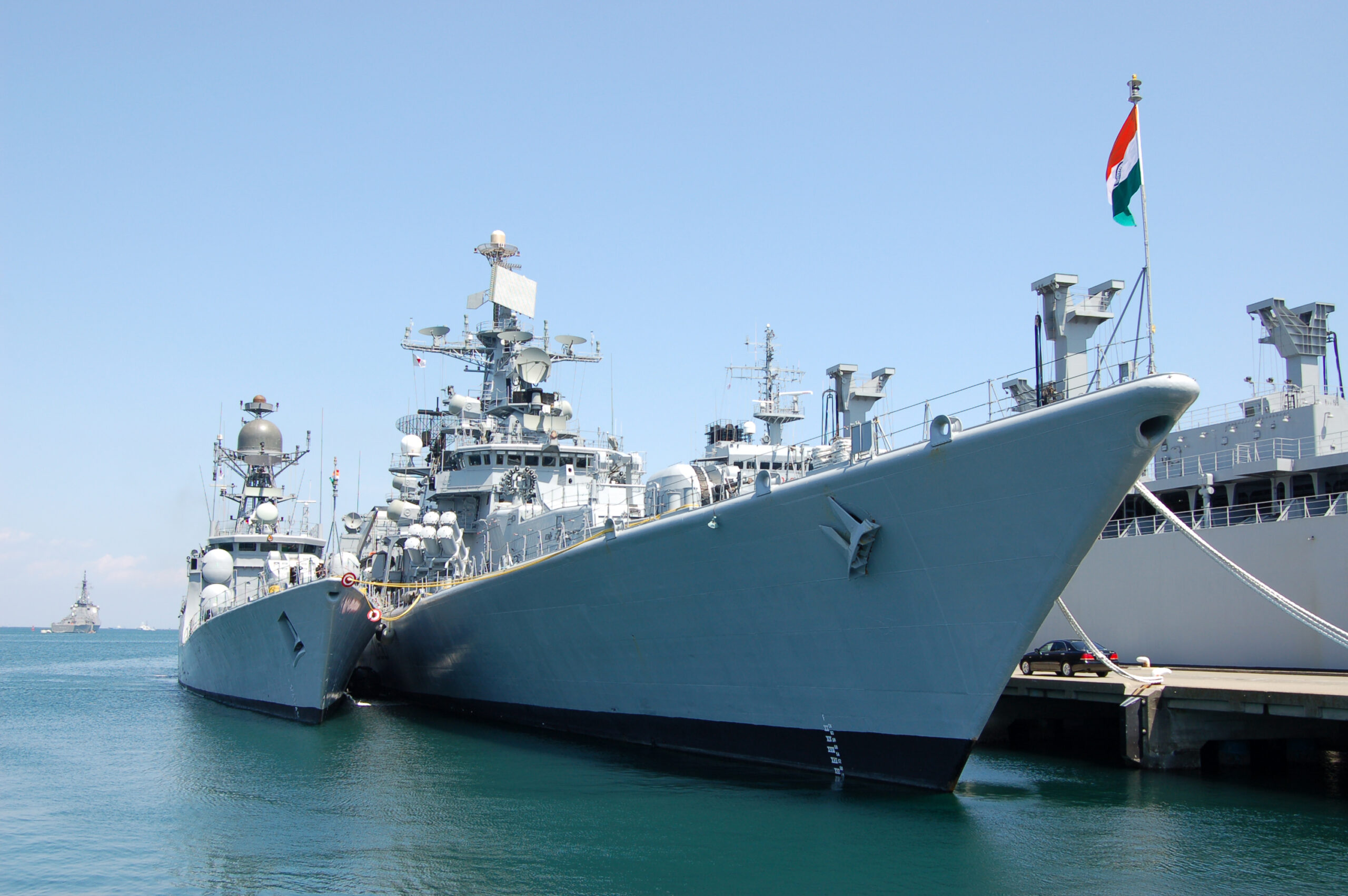Naval power is a significant measure of a nation’s military strength and influence. The world’s largest navies are equipped with extensive fleets, specialized warships, and well-trained personnel who guard coastlines and project power globally. Each navy brings its own history, strategic mission, and unique set of resources, demonstrating the diversity of maritime strength across countries. From submarines to aircraft carriers, these forces play crucial roles in national security. Here, we explore some of the most formidable navies in the world, detailing their fleets, personnel, and defining characteristics.
Russia

The Russian Navy, headquartered in Moscow, stands as one of the most powerful maritime forces globally. With over 780 ships, including submarines, destroyers, and frigates, it commands an impressive fleet that patrols waters from the Arctic to the Black Sea. The navy employs approximately 150,000 active-duty personnel, who are highly trained in modern warfare and specialized operations. Established in 1696, it holds a legacy of maritime expertise dating back to the reign of Peter the Great, making it one of the oldest naval forces. Its strategic capabilities include nuclear-powered submarines and one aircraft carrier, placing Russia as a formidable presence on the seas.
China

The Chinese People’s Liberation Army Navy (PLAN) is rapidly growing and already ranks among the largest with around 730 ships. Headquartered in Beijing, the PLAN operates various vessels, including advanced destroyers, amphibious ships, and submarines, as well as two aircraft carriers. Over 300,000 personnel support its operations, reflecting China’s vast resources and commitment to expanding its naval reach. Founded in 1949, the navy has transformed into a sophisticated force with modern weaponry and technology. As a key player in the South China Sea, PLAN underscores China’s aspirations for maritime dominance in the region.
North Korea

North Korea’s navy, headquartered in Pyongyang, is notable for its vast fleet of over 500 vessels, including numerous small submarines and patrol boats. With approximately 60,000 personnel, it focuses on coastal defense and asymmetric warfare strategies. Established in 1946, the North Korean Navy lacks the advanced technology seen in other global powers but compensates with sheer numbers and a focus on small, agile vessels suited for regional waters. Despite limited resources, the navy remains a critical part of North Korea’s military strategy, ready to defend its coastline against perceived threats.
United States

The United States Navy, headquartered in the Pentagon, is the most powerful navy in the world with over 470 ships and submarines. It has around 340,000 active-duty personnel, along with an extensive reserve force, which together ensure its global reach and readiness. Founded in 1775, the U.S. Navy is known for its technological innovation, including nuclear-powered aircraft carriers and advanced submarines. Its capabilities allow it to operate in every ocean, projecting power worldwide and maintaining strategic influence across continents. The U.S. Navy also leads in aircraft carrier fleets, emphasizing its air superiority at sea.
Sweden

The Swedish Navy, based in Stockholm, focuses on the defense of the Baltic Sea with a fleet of over 350 vessels. It includes corvettes, patrol boats, and submarines designed for Sweden’s unique coastal environment, especially suited for shallow waters. Around 7,000 personnel, including both active-duty and reserve forces, serve in the navy. Founded in 1522, it has a long history and remains one of Europe’s most experienced naval forces. The Swedish Navy’s main mission is to safeguard the nation’s coastlines, maintain neutrality, and participate in regional security initiatives.
Indonesia

The Indonesian Navy, headquartered in Cilangkap, Jakarta, is one of Southeast Asia’s largest, with over 330 ships, including frigates, corvettes, and patrol boats. It employs around 74,000 personnel, ensuring readiness across the sprawling Indonesian archipelago. Established in 1945, it plays a critical role in maintaining maritime security in one of the world’s busiest waterways. Given Indonesia’s extensive coastlines, the navy focuses on protecting its territorial waters, countering piracy, and securing strategic choke points. The Indonesian Navy frequently engages in regional alliances to support its defense initiatives.
Italy

Italy’s navy, the Marina Militare, is headquartered in Rome and boasts a modern fleet of approximately 300 ships, including destroyers, frigates, and submarines. With over 30,000 active-duty personnel, it has a well-trained force capable of both national defense and international missions. Founded in 1861, the navy’s history reflects Italy’s long-standing maritime traditions and role in Mediterranean security. Today, it plays a significant part in NATO operations, focusing on peacekeeping, counter-piracy, and safeguarding the Mediterranean region. The Marina Militare remains a symbol of Italy’s naval expertise and commitment to global maritime stability.
India

The Indian Navy, headquartered in New Delhi, has approximately 295 ships and submarines, including aircraft carriers, destroyers, and frigates. Over 67,000 personnel work within its ranks, supporting India’s vision as a regional maritime power. Founded in 1612 as a naval force of the British East India Company, it officially became the Indian Navy in 1950 after India’s independence. Its capabilities are directed towards safeguarding India’s maritime borders and ensuring freedom of navigation in the Indian Ocean. With ambitious modernization plans, the Indian Navy continues to grow as a pivotal force in South Asia.
Thailand

The Royal Thai Navy, headquartered in Bangkok, operates a fleet of around 290 vessels, including frigates, patrol boats, and one aircraft carrier. The navy employs approximately 70,000 personnel dedicated to protecting Thailand’s coastlines and supporting regional stability. Founded in 1906, the Royal Thai Navy has a storied history and maintains its significance through modernization and close alliances with other naval forces. It focuses on safeguarding Thailand’s waters, countering smuggling, and participating in international peacekeeping missions. The Royal Thai Navy remains central to Thailand’s national defense and regional cooperation efforts.
Sri Lanka

The Sri Lanka Navy, based in Colombo, operates a fleet of around 270 vessels, focusing mainly on patrol boats, small combat ships, and coastal defense. With approximately 48,000 active-duty personnel, it plays a critical role in safeguarding Sri Lanka’s extensive coastline and Exclusive Economic Zone. Established in 1950, the navy has grown significantly, adapting to challenges like smuggling and piracy in the Indian Ocean. The navy focuses on protecting the island nation’s sovereignty and collaborates with other regional powers. Sri Lanka’s maritime forces are crucial to ensuring security in the busy sea routes around the country.
Finland

The Finnish Navy, headquartered in Turku, commands around 246 vessels, most suited for coastal defense and operations in the Baltic Sea. With a relatively small personnel count of around 6,000 active-duty members, the navy is highly specialized in asymmetric warfare and operates effectively in Finland’s unique coastal waters. Established in 1918, it has evolved from a modest force to a well-trained, technically capable navy focused on national defense. Finland’s naval fleet includes missile boats, mine layers, and patrol craft, enabling it to maintain security in its waters. The navy also supports NATO initiatives in the Baltic region.
Colombia

Colombia’s navy, based in Bogotá, operates approximately 237 ships, including frigates, submarines, and patrol vessels dedicated to coastal security and anti-narcotics missions. Over 35,000 active-duty personnel serve in the Colombian Navy, focusing on protecting the nation’s vast coastline and combating drug trafficking in the Caribbean Sea and Pacific Ocean. Founded in 1810, it has grown into one of South America’s most prominent navies, playing a key role in regional stability. The Colombian Navy also engages in humanitarian missions and international security collaborations, reinforcing its strategic importance in the Americas.
Myanmar

The Myanmar Navy, headquartered in Yangon, has a fleet of approximately 227 ships, including frigates, corvettes, and patrol vessels. Around 19,000 active-duty personnel serve within its ranks, tasked with defending Myanmar’s extensive coastline and vital sea routes in the Bay of Bengal. Established in 1940, the navy has seen significant growth, with recent investments in modernizing its fleet and improving its capabilities. Myanmar’s navy supports both national defense and regional stability, and its strategic location along major maritime routes emphasizes its importance in Southeast Asia. It maintains a vigilant role in safeguarding the country’s waters and resources.
Algeria

Algeria’s navy, headquartered in Algiers, includes about 213 ships, making it one of the largest and most powerful maritime forces in Africa. With a dedicated force of approximately 40,000 active-duty personnel, it operates a range of vessels, including frigates, submarines, and patrol boats. Established in 1962, the Algerian Navy has developed a robust capacity for regional security and safeguarding the Mediterranean coastline. The navy is committed to national defense and regularly conducts joint exercises with regional allies. Its mission extends to counter-terrorism and anti-smuggling operations, solidifying its role as a leading African naval power.
South Korea

South Korea’s navy, headquartered in Gyeryong, commands a fleet of about 200 vessels, including submarines, destroyers, and amphibious ships. Over 70,000 active-duty personnel are employed to protect South Korea’s coastline and maintain readiness against regional threats, especially from North Korea. Established in 1945, it has grown into one of Asia’s most advanced navies, emphasizing technological innovation and maritime strategy. South Korea’s navy often participates in international operations and regional alliances, underscoring its commitment to peace and stability in East Asia. Its capabilities enable it to respond swiftly to challenges in the Korean Peninsula.
Mexico

The Mexican Navy, based in Mexico City, operates around 194 vessels, with a fleet that includes frigates, patrol boats, and specialized units for coastal defense. Approximately 68,000 active-duty personnel serve within the navy, tasked with protecting the nation’s extensive coastline along the Gulf of Mexico and Pacific Ocean. Founded in 1821, it has evolved into a powerful force, focusing on coastal defense and counter-narcotics operations. The Mexican Navy also supports humanitarian missions and regional peacekeeping, reflecting its multifaceted role in national and regional security. It plays a key role in defending Mexico’s maritime sovereignty.
Greece

Greece’s navy, the Hellenic Navy, is headquartered in Piraeus and maintains a fleet of about 187 ships, focusing on destroyers, frigates, and submarines. With approximately 20,000 active-duty personnel, the Hellenic Navy protects Greece’s vast territorial waters in the Aegean and Ionian Seas. Founded in 1828, it has a long and storied history, reflecting Greece’s strong maritime tradition and strategic position in the Mediterranean. The Hellenic Navy participates in NATO exercises and focuses on safeguarding regional stability. Its fleet is modernized to counter challenges in the Eastern Mediterranean, maintaining Greece’s significant maritime influence.
Turkey

The Turkish Navy, headquartered in Ankara, operates around 186 ships, including destroyers, submarines, and advanced frigates designed for both national defense and regional power projection. Around 45,000 personnel support the Turkish Navy’s operations, emphasizing readiness and rapid response. Established in 1920, it is one of the most robust naval forces in the Eastern Mediterranean, actively participating in NATO operations and regional security initiatives. Turkey’s navy focuses on defending the country’s long coastline, maintaining a presence in the Aegean and Black Seas, and contributing to international peacekeeping. Its strategic importance has only grown in recent years, reflecting Turkey’s role as a regional power.
This article originally appeared on Rarest.org.
More from Rarest.org
12 Oldest Universities in the U.S.

The United States is home to some of the oldest universities in the world, institutions that have been shaping education for centuries. Read More.
10 Largest Zoos in the United States

The United States is home to some of the largest and most impressive zoos in the world. Read More.
19 Forgotten Scientific Theories That Changed the Way We See the World

Science has evolved through centuries of bold ideas, some of which now seem unusual or even mistaken. Read More.
